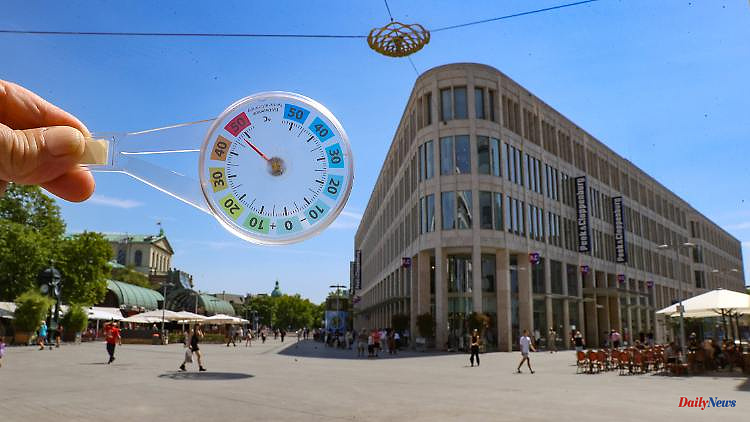With comprehensive heat action plans, cities are to be armed for climate change and rising temperatures. According to the Federal Environment Agency, more green spaces are the solution to bring cooling effects in urban areas.
In view of the heat wave, the Federal Environment Agency is urging cities to be better equipped to withstand high temperatures and heavy rain. "We have to rebuild our cities in order to be able to live with climate change," said President Dirk Messner. "Above all, this includes a lot more greenery in the cities. That cools things down significantly." When it rains, the city needs to be able to soak up and store the water so that it evaporates when it's hot, bringing another cooling effect. The restructuring of cities as an important change in health protection must begin now.
Messner said the experiences with the flood disaster in the Ahr Valley a year ago and now temperatures of 40 degrees in Germany and Europe are just the beginning of the crisis. This shows once again that climate change is not only threatening the health of many people and local infrastructures in developing countries, but also here. "We will have to unseal areas such as parking lots, streets and paved squares and make room for cooling green," explained Messner. This helps in the fight against heat and heavy rain, improves the quality of life in general and creates space for climate-friendly mobility such as cycling. In order to lower perceived temperatures, it also helps to preserve existing trees, avenues and parks and to secure them with drinking water-saving irrigation.
Messner made it clear that cities should create heat action plans across the board that would provide financial support to the federal and state governments. This can be used to analyze where heat centers are and which people are particularly affected. On this basis, measures such as information campaigns, retrofitting of buses and trains with air conditioning or surface unsealing could then come. Messner emphasized that public institutions should be role models for heat prevention with nature-based measures. "For example, new daycare centers, gymnasiums or fire stations should be consistently equipped with green roofs."












